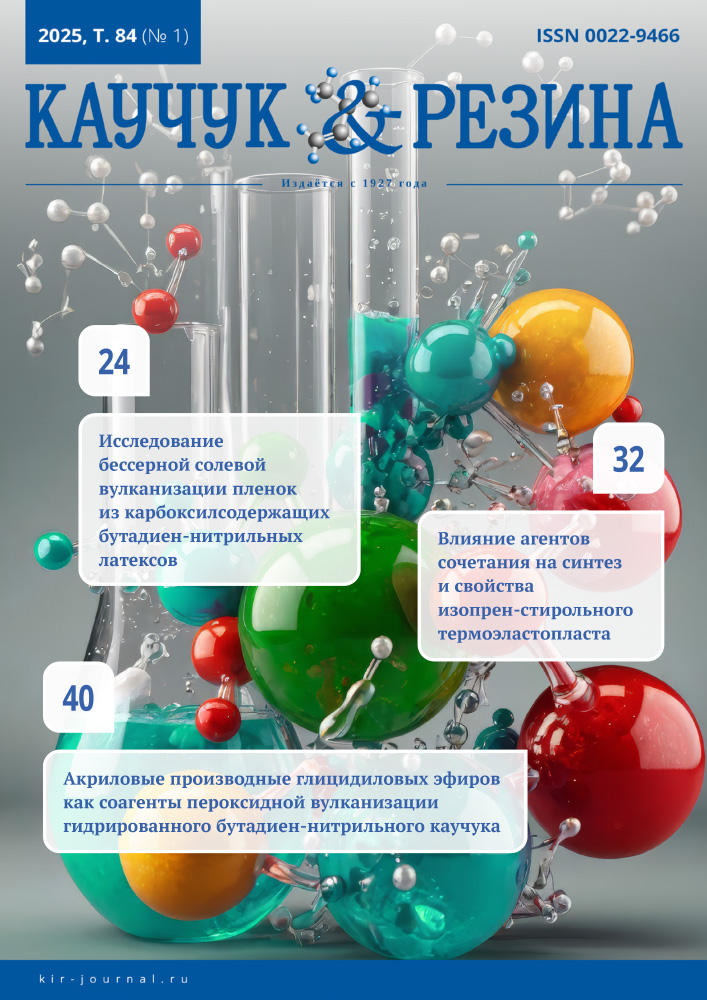Effect of Coupling Agents on the Synthesis and Properties of Isoprene-Styrene Thermoplastic Elastomer
Published 2025-05-25
How to Cite
Abstract
The influence of coupling agents: silane derivatives – alkoxy- (teraethoxysilane (TEOS), methyltriethoxysilane (MTEOS), methyltrimethoxysilane (MTMOS)) and halogensilane (silicon chloride (IV)) on the kinetics of the coupling process and the properties of the obtained isoprene-styrene thermoplastic elastomer (IST) was studied. It was revealed that during the synthesis of branched thermoplastic elastomer (TPE), where silicon chloride (IV) was used as a coupling agent, an acidic environment of the aqueous extract of the polymer was created, which can lead to corrosion of the equipment over time. It was found that when using alkoxysilanes, the aqueous extract of the polymer had an alkaline reaction pH > 7, reducing the risk of equipment failure. It was found that the obtained thermoplastic elastomers had a narrow molecular weight distribution (1,06–1,22) regardless of the coupling agent used. The homopolystyrene content was 4–8% by weight, indicating a minor presence of impurities in the system that terminate «live» chains. It was found that the content of the diblock copolymer can be regulated by dosing the coupling agent depending on the number of functional groups. It was shown that the use of MTEOS and MTMOS as coupling agents allows one to obtain TPE with high values of physical and mechanical properties, as well as good processability on molding equipment.

